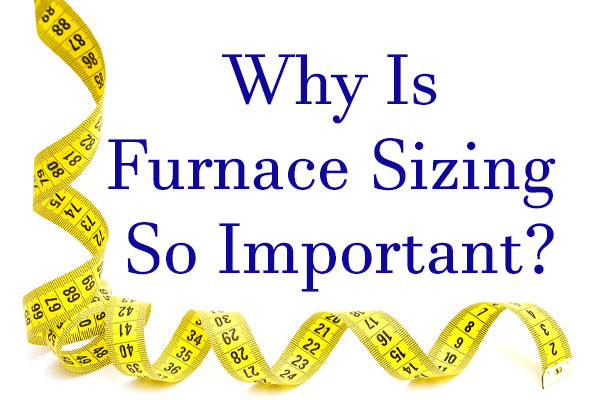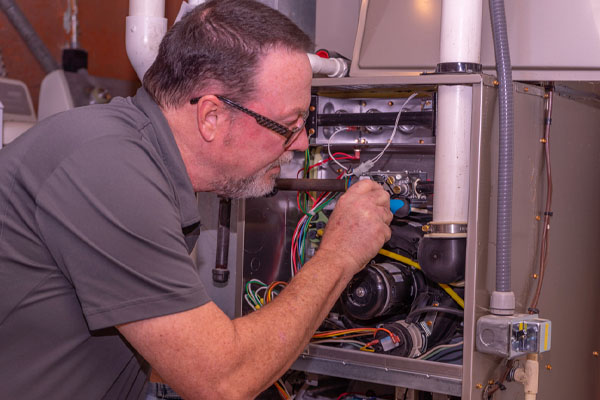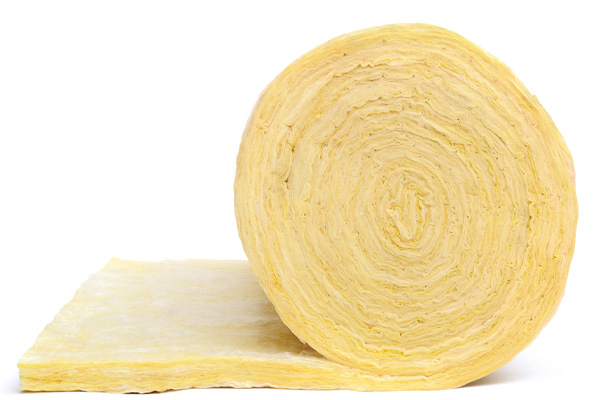Why Is Furnace Sizing So Important?

While large furnaces can be impressive, they are not always the most suitable choice. Having the most powerful equipment may not necessarily lead to optimal results if installed in places that are not a good fit. That is why it is crucial to prioritize matching your home’s needs rather than simply going for the largest size available. Selecting the right furnace involves factors, making it a complex process. For precise analysis and guaranteed compatibility, get the assistance of an experienced HVAC contractor. This article delves into the importance of proper furnace sizing.
Why Is Furnace Sizing So Important?
Contents
Many homeowners make mistakes when selecting furnaces, often relying on questionable criteria. Without proper guidance, they frequently end up with units that are either too large or too small. This leads to negative consequences due to their lack of experience. The farther the chosen furnace is from the ideal size, the more severe the effects can be. Instead of enhancing comfort, it may result in physical and financial stress. Even minor discrepancies can lead to discomfort. For decades of hassle-free ownership, get the furnace size right from the beginning.
Related Article: Air Handler vs Furnace: What’s the Difference Between Them?
What’s Wrong with Oversized or Undersized Furnaces?
1. Comfort

A furnace that is too small lacks the necessary power to effectively warm the home, especially on the coldest days of the year. Even when the heating system is running at full capacity, you can find yourself needing to bundle up in layers of clothing and blankets. It could run continuously without ever reaching your desired temperature.
On the other hand, an oversized furnace can create its own set of problems. It can cause certain areas to heat up too quickly. This can fool the thermostat into thinking that the entire house is sufficiently warm. The furnace may shut off, leaving other rooms still uncomfortably cold. This can lead to complaints from family members about uneven temperatures throughout the house.
2. Furnace Efficiency
The energy consumption of a furnace varies depending on its operational phases. It typically consumes more energy during the startup and shutdown phases, so it is beneficial to minimize these periods. The furnace reaches its peak efficiency during the stable middle phase of operation.
As previously mentioned, oversized furnaces often exhibit a behavior known as “short cycling.” They frequently turn on and off rapidly throughout the day. This results in higher energy consumption compared to a properly sized unit. They never quite settle into a consistent operating rhythm. On the other hand, undersized units tend to work excessively hard to heat a home, leading to significant wear and tear. Since heating systems account for a substantial portion of the energy consumption in US households, improper sizing exacerbates energy efficiency and environmental impact for both families and the environment.
Related Article: The Importance Of Home Air Sealing Your Home On Energy Costs
3. Energy Costs
Higher energy consumption leads to increased monthly expenses. This is true whether your furnace operates on natural gas, propane, or heating oil. If your furnace is either too large or too small for your home, you can expect to pay more for fuel than necessary. The disparity in costs could amount to thousands of dollars annually. It is a considerable amount to spend in excess without receiving any benefits in return. Instead of enjoying consistent comfort, you may experience uneven heating throughout your home. Get the furnace size right to prevent wasteful spending and ensure cost-effective heating. Consult with an expert to determine the right furnace size.
Related Article: Fireplaces Vs. Furnaces: Which One Is The Better Choice For Your Home?
4. HVAC Lifespan

Short cycling is not just an inconvenience that affects comfort and efficiency. It also has a detrimental impact on the furnace’s longevity and its individual components. The frequent on-and-off cycles accelerate wear and tear on these parts, causing them to deteriorate faster than under normal circumstances. Instead of enjoying a heating system with a potential service life of 20 years or more, you might find yourself needing a replacement within a decade or even less. The same applies to furnaces that are undersized for your home.
You will be faced with the prospect of purchasing a new furnace much sooner than anticipated. This can incur thousands of dollars in installation costs. This is by no means a trivial investment. Prioritize an accurate professional assessment for smart furnace selection. Seasoned HVAC technicians possess the expertise needed to help you discover the perfect match for your home.
How Proper Furnace Size Is Calculated
1. Load Calculation
Every home has unique heating needs determined by factors such as floor area, layout, siding material, window type, insulation level, orientation, and more. Performing a manual load calculation for these requirements can be a time-consuming and complex task. As a result, experts often turn to advanced software that allows them to input these values and receive immediate and precise results.
Some traditional contractors may rely on simplified rules to estimate load requirements. This approach often results in inaccurate assessments. When you need a furnace replacement, hire HVAC professionals who use modern techniques to provide precise figures you can rely on.
Related Article: Does Your Furnace Overheat?
2. BTUs
Are you uncertain about whether to replace your furnace? Do you want to explore your options before consulting with professionals? If you are looking for a quick estimate, you can use a straightforward formula that takes into account two variables: the square footage of your home and the heating factor specific to your area. Simply multiply these two values to obtain a rough estimate.
Outdoor temperatures influence indoor heating requirements. In regions closer to the equator, you can expect predominantly warmer temperatures throughout the year. However, as you move to higher latitudes, the climate becomes colder. The demand for the heating system, or BTUs, increases. For example, California typically has a heating factor ranging from 30 to 35 BTUs, while Minnesota’s heating factor is 50 to 60 BTUs.
Related Article: My Furnace Turns On But No Heat – Why?
3. Insulation

While you may not have control over the regional climate, you do have the ability to enhance your home’s insulation. A high level of insulation can minimize the impact of external factors on indoor temperatures. Strategically apply insulation materials to vulnerable areas like the attic, ceilings, floors, and external walls. You may also choose to insulate your basement or crawlspaces. Seal gaps along your doors and windows. You can reduce the required furnace capacity below the standard load with adequate insulation. For instance, the typical recommendation in a 1,000-square-foot home in Minnesota might be a 60,000-BTU furnace. However, by taking insulation measures, you can significantly decrease this load.
Conclusion
Compatibility is vital when it comes to selecting a furnace size. Instead of opting for the largest unit available, prioritize a furnace size that matches your home’s specific requirements. Consult a knowledgeable HVAC contractor who can conduct advanced load calculations to provide precise results. Your diligence in this process will reward you with a comfortable home, efficient usage, substantial energy cost savings, and an extended lifespan for your equipment.
Related Article: What Is An AFUE Rating?
Call Lawes Company For All Of Your HVAC Requirements

Lawes Company offers top-notch HVAC services throughout the Jersey Shore area. Our team comprises highly certified technicians who excel in providing exceptional HVAC tune-ups, repairs, installations, and replacements.
At Lawes Company, we are committed to providing the most competitive HVAC service costs in the region. Our maintenance, repair, and replacement services are designed to enhance comfort, boost energy efficiency, and lower your HVAC expenses.
Whether you need an HVAC repair or a replacement unit, we are here to offer expert guidance to make sure that the solution aligns with your budget and needs. We back all our HVAC work with a satisfaction guarantee for your peace of mind. To schedule a service appointment, do not hesitate to contact Lawes Company today. We also offer complimentary, in-home estimates for your convenience.
Contact us now at (732) 741-6300 to find out more! Click the link to view our service area.